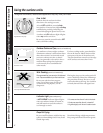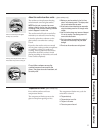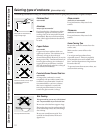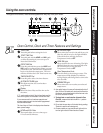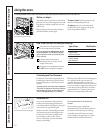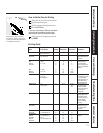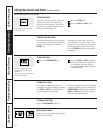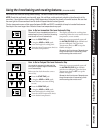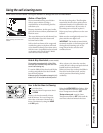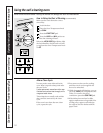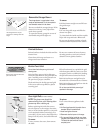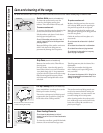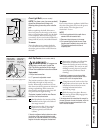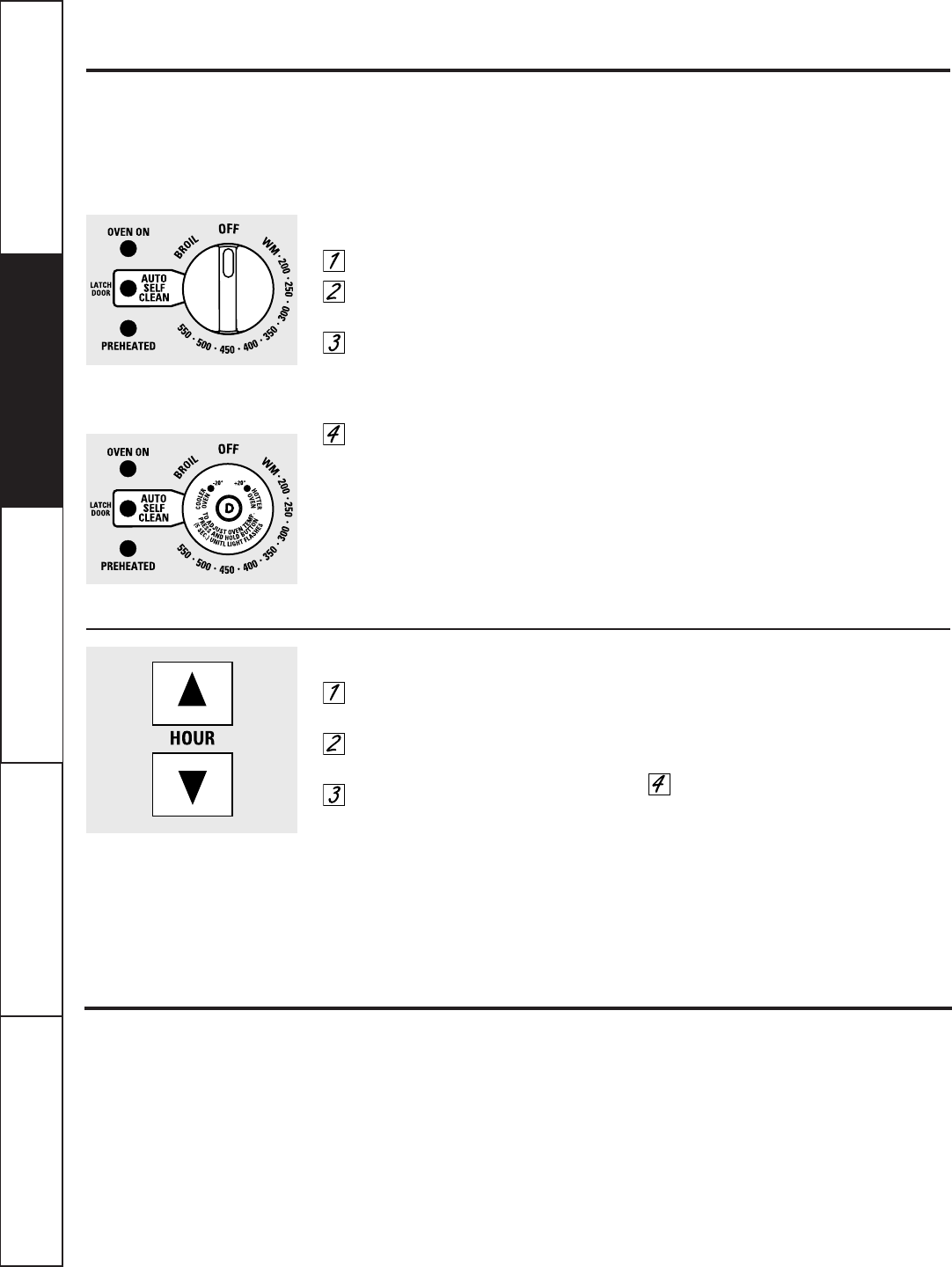
16
Safety InstructionsOperating InstructionsCare and CleaningTroubleshooting TipsCustomer Service
Adjust the oven thermostat—Do it yourself!
You may find that your new oven cooks differently than the one it replaced. Use your new oven for a few
weeks to become more familiar with it. If you still think your new oven is too hot or too cold, you can adjust
the thermostat yourself.
Do not use thermometers, such as those found in grocery stores, to check the temperature setting of your oven.
These thermometers may vary 20–40°F.
For Models with Only an Oven Temperature Knob
Put the knob in the
OFF
position.
Pull the knob off by pulling straight
out.
Press and hold the
HOTTER
or
COOLER
button for 5 seconds to
make the oven 20°F. hotter or
20°F. cooler.
Replace the knob.
When you are adjusting the thermostat,
the following lights will flash indicating
where the thermostat will be set when you
release the adjustment button:
■
OVEN ON: Indicates the thermostat will
be set at the factory setting.
■
PREHEATED: Indicates the thermostat
will be set 20°F. hotter.
■
LATCH DOOR: Indicates the thermostat
will be set 20°F. cooler.
For Models with Pads and an Oven Temperature Knob
Put the Oven Temperature knob in
the
OFF
position.
Press and hold the
HOUR +/–
pads for
5 seconds until the display changes.
Before display changes back, press
the
HOUR +/–
pads to increase or
decrease the temperature in 5
degree increments.
The oven temperature can be increased
up to 35°F. hotter or can be decreased
down to 35°F. cooler.
If the oven adjustment is set cooler than
the factory setting a minus sign (–) and
the offset temperature will appear in the
display.
Wait several seconds for the control
to automatically set and return to its
previous setting.
NOTE: This adjustment will not affect the
broiling or the self-cleaning temperatures. The
adjustment will be retained in memory after a
power failure.
(appearance may vary)
The type of margarine will affect baking performance!
Most recipes for baking have been developed using high fat products such as butter or margarine (80% fat). If you
decrease the fat, the recipe may not give the same results as with a higher fat product.
Recipe failure can result if cakes, pies, pastries, cookies or candies are made with low fat spreads. The lower the fat
content of a spread product, the more noticeable these differences become.
Federal standards require products labeled “margarine” to contain at least 80% fat by weight. Low fat spreads, on the
other hand, contain less fat and more water. The high moisture content of these spreads affects the texture and flavor of
baked goods. For best results with your old favorite recipes, use margarine, butter or stick spreads containing at least
70% vegetable oil.



